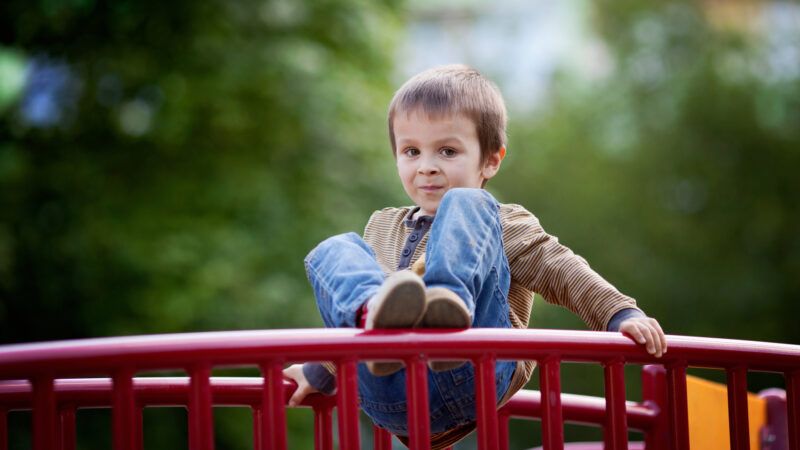Even Canada Thinks the Nanny State Has Gone Too Far on Outlawing Fun
A new white paper from the Canadian Pediatric Society recommends more unstructured play time for kids.

Kids need to climb trees, jump off things, and ride their bikes—even at speed. That's what the Canadian Pediatric Society is recommending in a new white paper: Healthy Childhood Development Through Outdoor Risky Play.
It's the sort of finding that is almost considered radical these days. Mariana Brussoni, a developmental psychologist at the University of British Columbia, has been championing risky play for more than a decade, but the Pediatric Society wasn't ready to endorse her call to action.
It was only when faced with soaring rates of childhood anxiety, depression, obesity, and even myopia that Canadian health officials realized that "letting kids go out and play could be a way to deal with a lot of these challenging issues," says Brussoni.
That's because the doctors came to recognize two truths.
First, children are hard-wired to play because it aids their development. It teaches them how to take action, get along, and solve problems.
Second, replacing rollicking, kid-led play with structured, adult-led play was a mistake. It deprived children of a million opportunities to exercise their autonomy. It also increased their risk of physical danger.
When kids play without adult supervision, they hone their social and emotional coping skills, according to the report. What's more, free play can "significantly reduce children's risk for elevated anxiety."
Play does that in a rather obvious way, says Peter Gray, a professor of psychology and neuroscience at Boston College and a co-founder with me of Let Grow.
"From an evolutionary standpoint, why do children want to play in a risky way?" asks Gray. "Because this is how they develop a little courage. They deliberately put themselves into situations where they're feeling fear so that, unconsciously, they can have a sense of control over it: 'I can feel this fear and survive it.' So when they face a real emergency, they are slightly less likely to panic. They are also less fearful because they know, 'Something can happen, and I can manage it.'"
The Canadian report recommends pediatricians promote risky play as preventative medicine for mental health.
But what about the physical danger that risky play sometimes involves? How can doctors—and parents and schools—ignore that?
By looking at statistics, says Brussoni.
"From 2007 to 2022, there were two deaths from falls on the playground, and 480 deaths from motor vehicle crashes," she says.
And as the Pediatrics paper notes, "The research has established that children are less likely to be injured while engaging in unstructured activities than when playing an organized sport."
Sports are more dangerous than goof-around play? It's starting to sound like the real risk in "risky play" is that our culture has been busy outlawing it. Think of signs like the one in a suburban Washington, D.C., playground that warns would-be fun-havers: adult supervision required.
So how can we normalize free play again?
Brussoni tells parents to start with an "underwhelming" experiment.
"Let them out into the backyard while you're watching for a few minutes," she says.
The next day, sit in the kitchen and don't watch. You and your kids will get used to time apart.
Another way is to ask your kids' school to start a "Let Grow Play Club." That's when the school stays open for mixed-age free play. An adult is there but like a lifeguard. They don't organize the games or solve the spats.
The Canadian Pediatrics Society issued its full-throated endorsement of risky play partly in response to the "restrictive safety programs and measures that have become more broadly implemented—and sometimes mandated—in child care settings, schools, and playgrounds in recent years."
If even overly cautious Canada is saying safety culture has swung too far, it's time to jump off the swing.
Show Comments (29)